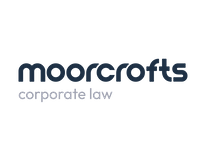Autumn Budget 2024: Key changes impacting businesses and exit plans over the next 5 years
On 30 October, the Chancellor of the Exchequer, Rachel Reeves, delivered the Autumn Budget, accompanied by a full fiscal statement from the Office of Budget Responsibility.
In the first and much anticipated budget from the Labour government in 14 years, the Chancellor announced over £40 billion worth of tax increases.
Below we have highlighted the key headline items that we feel will affect our clients, their businesses and exit plans generally over the next 5 years.
Capital Gains Tax
Capital Gains Tax (“CGT”) is the tax you pay on the profit you make when you sell an asset or shares. The gain is calculated by looking at the difference between the value you paid for the asset or shares and the value at which you sell the asset or shares.
An individual is classed as a lower rate taxpayer if their income is below £37,700 and an individual is classed as a higher rate taxpayer if their income is above £37,700.
Commentators expected that the rates of CGT would increase to be more in line with income tax, prompting some business owners to consider bringing forward any planned sales or reorganisations. In light of this, Moorcrofts have acted on a record number of exits in the period leading up to the Budget, to avoid the potential tax hikes for business owners.
In the event, it wasn’t as bad as anticipated, and following the Autumn Budget CGT changed as follows:
- the lower rate CGT increased from 10% to 18%.
- the higher rate CGT increased from 20% to 24%.
- Notably, the capital gains tax free allowance has remained the same at £3,000, known as the Annual Exempt Amount (“AEA”). This means that you only pay CGT on any gains above the £3,000 AEA.
Please see the example below which demonstrates the amount of CGT that would be payable depending on whether you are a basic rate taxpayer or a higher rate taxpayer.
| Amount that shares were acquired for | Amount that shares are sold for | Tax Rate | Amount of CGT payable on shares |
| £100,000 | £5,000,000 | Basic rate taxpayer (18%) | You would be taxed on the gain of £4,900,000 – less the AEA of £3,000.
This means that you would pay £881,460 in CGT on sale of these shares. |
| £100,000 | £5,000,000 | Higher rate taxpayer (24%) | You would be taxed on the gain of £4,900,000 – less the AEA of £3,000.
This means that you would pay £1,175,280 in CGT on sale of these shares. |
Capital Gains Tax – Business Asset Disposal Relief
Business Asset Disposal Relief (“BADR”) can reduce your effective rate of CGT to 10% when you sell certain business assets or shares. The relief is subject to a lifetime limit of £1 million for share disposals, with the current maximum potential tax saving under BADR therefore £100,000.
In order to qualify for BADR you must:
- not have surpassed the £1 million lifetime limit;
- be an officer or employee;
- have owned the company for at least the last 2 years; and
- hold at least 5% of the business’s share capital and at least 5% of the voting share capital and must have had this for at least the last 12 months.
Following the Autumn Budget:
- the BADR rate will remain unchanged for the remainder of the current tax year.
- the current 10% CGT rate will continue to apply to qualifying gains of business assets on or before 5 April 2025.
- BADR CGT rates will increase to 14% on or after 6 April 2025 and again to 18% on or after 6 April 2026.
As a result of the upcoming tax increases, we would advise that if you are considering selling your business, now is the time to act in order to take advantage of the current lower rate of BADR. Please contact our corporate team if you are thinking of selling your business.
Employee Ownership Trusts
Given that the CGT rates have now increased, it is possible that Employee Ownership Trusts (“EOTs”) will become a consideration for those looking to sell their company free from CGT.
EOTs are essentially a government initiative aimed at employee ownership by giving business owners the opportunity to sell their shares to its employees by way of an EOT free from CGT, as long as certain conditions are met:
- The company must be a trading company or the holding company of a trading group; and
- After the sale the EOT must hold more than 50% of the shares in the company;
- The EOT must be set up for the benefit of all eligible employees on the same terms; and
- The number of people who are directors or employees and who continue to hold at least 5% of the company’s shares must not exceed 40% of the total number of employees, following the disposal.
The Autumn Budget has introduced new reforms to EOTs which tighten up the qualifying rules, and some of the key changes include:
- former owners and individuals who are connected to a company will no longer be able to retain direct or indirect control of the EOT;
- the trustees of an EOT will now need to be UK residents at the time of the disposal to the EOT
- contributions made to repay former owners will be free from income tax
- bonuses can now be awarded to employees without the need to include directors
- the consideration paid for the shares when selling to the EOT must not exceed market value
- Previously if an EOT ceased to meet the relevant conditions between the point of transfer and the end of the following tax year, CGT tax relief on the sale of the company may be lost and could be subject to claw back, this period has now been extended to 4 years.
Even with these changes the EOT remains a good option to consider if you are thinking about selling your business, please speak to our corporate team for more details.
Employer’s national insurance contributions
The biggest blow for businesses in the Budget was the increase to employers NI as follows:
- Companies will pay national insurance contributions at 15% on earnings above £175 a week from April 2025, representing a 1.2% increase.
- The national minimum wage (“NMW”) increased by 6.7% from April 2025 from £11.44 to £12.21 per hour.
- In addition, the NMW for 18–20-year-olds has increased from £8.60 to £10 per hour.
- The Government will also reduce the threshold when employers NI contributions are due from £9,100 to £5,000.
- However, the employment allowance will be increased, from £5,000 to £10,500.
- Unfortunately, some business owners may need to contemplate reducing staff numbers to mitigate the higher NI costs. If this is something you may need to consider, please do first seek legal advice from our specialist employment team.
Income tax, employee national insurance contributions, VAT, corporation tax and dividend tax
- Rates of income tax, national insurance paid by employees, VAT, corporation tax and dividend tax remain unchanged.
- The Chancellor of the Exchequer revealed that the government will increase personal tax thresholds on income tax and national insurance in line with inflation from 2028.
Umbrella companies
- From April 2026, recruitment companies will be responsible for accounting for PAYE on payments made to contractors supplied via umbrella companies.
- If there is no recruitment company, then the responsibility to account for PAYE will fall on to the end user company. As a result, there may be fewer umbrella companies and companies may look at restructuring in order to deal with the new requirements.
Business Relief for Inheritance Tax
- From 6 April 2026, 100% Business Relief for Inheritance Tax (“IHT”) will be limited to the first £1 million of qualifying assets, with the remainder eligible for 50% IHT relief.
This means in effect a 20% tax bill on passing on family company shares on death.
Enterprise Investment Schemes and Seed Enterprise Investment Schemes
Some good news was that the Enterprise Investment Scheme (“EIS”) and Seed Enterprise Investment Scheme (“SEIS”) were left unaltered in the Budget and this is a relief for many early-stage small to medium sized companies looking for investment.
EIS and SEIS are government initiatives designed to encourage investors to invest by offering various tax reliefs on EIS and SEIS qualifying investments.
EIS/SEIS Income Tax relief
- Upon purchasing new shares, investors are able to claim Income Tax relief either on the tax year that they make the investment or the tax year before they make the investment (if they choose to treat part or all of their investment as being made in a previous year).
| Scheme | Maximum annual investment you can claim relief on | % of investment on which you can claim |
| SEIS | £200,000 | 50% |
| EIS | £1 million or £2 million if at least £1 million of that is invested in knowledge-intensive companies |
30% |
Please note that investors can only claim relief against the amount of Income Tax paid in the UK, nor can investors carry forward any unused Income Tax relief to future tax years.
EIS/SEIS CGT relief
- In addition, investors who invest through an EIS or SEIS may be entitled to obtain CGT relief or deferral when they sell their shares.
Moorcrofts expects EIS and SEIS to remain popular and viable options for investors to gain valuable income tax savings on their investments and for companies to attract investment.
Contact us
If you’re concerned about how these changes might affect your business and to ensure you’re prepared and can make informed decisions for the future, contact a member of our team.



